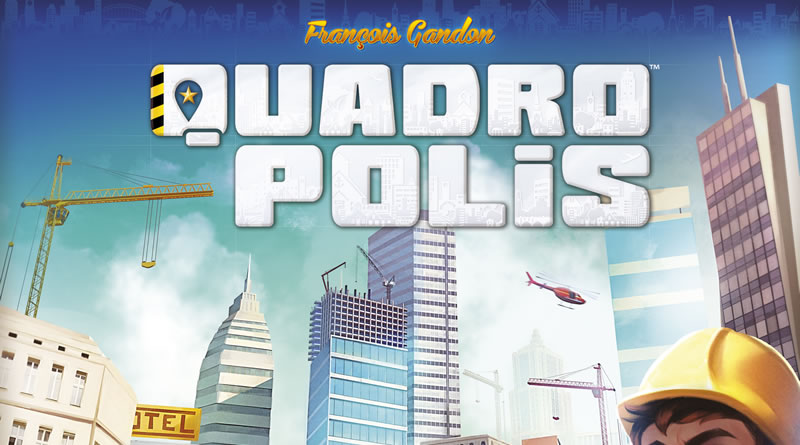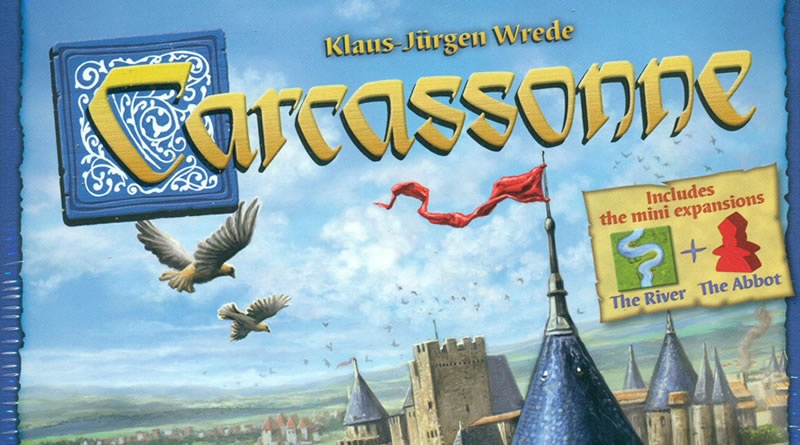“To err is human…
To arr is seriously pirate”
Tortuga 1667 takes you back in time over 350 years to the brutal and deceitful life of a pirate, where all that matters is the plunder and if a smattering of mutiny, brawling and backstabbing occurs along the way then all the better.
As we entered 2017 I made a resolution to stop watching from the sidelines and start backing gaming projects on Kickstarter that looked genuinely worthy and enjoyable. Tortuga 1667 seemingly ticked all the right boxes and was the first campaign I went with that January, and subsequently my first ever Kickstarter pledge. The fact that I have published a page titled ‘Tortuga 1667 board game review’ should at least give some indication that my first ever campaign was successfully fulfilled…unlike some of the others last year (but that’s a whole other blog post).
What’s in the box?
First of all, the box itself is really cool. It’s a false antique book with a magnetic lock on the cover and feels and looks really classy and l love the way it can be stored on a bookshelf without looking like a game. Inside the book, sorry, box is:
- The Rulebook
- 75 Game Cards – 9 Pirate Characters, Loyalty, Event and Vote cards and a Quick Start Guide)
- Rubber Playing Mat (beautiful quality, like a mouse pad)
- Cloth pouch (again, really nice)
- 9 Wooden Pirate Pawns
- 8 Wooden Treasure Chests Tokens
- 1 Wooden Explosion Token
Basic Game Overview
Tortuga 1667 has you playing the role of a real historical pirate and having chanced upon an undefended Spanish galleon, loaded with gold, you and your crew seek to steal the treasure and sail off into the sunset. But, there are already foes close by as another pirate ship also has its eyes set on the glittering prize. Do you trust any of your crewmates to help you out?
Well…therein lies the problem, or rather the crux of what makes this a rather fantastic little game.
Before the game starts every player is secretly dealt a Loyalty card, which will determine whether their piratical loyalty is to the British or to the French and this secrecy persists until the end of the game so you begin without having any idea of who your team mates actually are. Naturally, this particular game mechanic only really kicks in if there are four or more players and Tortuga 1667 is a game for two to nine players. If two players are squaring up then clearly you know which flag each of you is allied to, but if a third player is in the game then someone will be dealt the Dutch card. This is the case if there is any odd number of players involved. There are four British and French cards and one Dutch card in the deck, so if five people play then two will be British, two will be French and the other person Dutch. The British or French ‘team’ wins if they have the most gold when the Spanish Armada turns up to protect the stranded Spanish galleon. If the game ends in a tie between these two rival nations then the Dutch player wins.
It is at this point that I will pin my colours to the mast and suggest that this game works best as a ‘party game’ where there are five or more players because the inability to know who to trust is where the magic of the game lies. A four player game is still great fun, and a three player game is also captivating and entertaining…it just doesn’t work so well as a two player game and I do want to say that gently as I LOVE this game, but personally I would have suggested this as a three to nine player game rather than being suitable for two players. The addition of the Dutch card is genius as that one player working to foil the plans of pretty much every other player in the other two evenly matched teams is a really clever and disruptive mechanic. Having four people around the board not knowing who their partner is really cool in the initial rounds and so the subtext of social deduction begins. An eventual mutual recognition of who your partner is very rewarding, but as is often the case with human nature you can soon after learn that your supposed buddy has been bluffing and is actually playing against you. It’s game such as this that make me realise how devious my friends and family members are!
To play the game, each player takes it in turn to perform one action during each round. There are actions that all players can perform, such as view two event cards or move their pawn to or from a rowing boat to move between the two pirate ships and the island of Tortuga, and there are actions that only certain players can make depending on their status upon their pirate ship. For example, the captain of a ship can call for an attack on the Spanish galleon to steal some more gold, or the First Mate can call for a mutiny to try and depose the current captain. These last two actions are examples of where the Vote cards come into play. If a captain calls for an attack to be made then any other player on that captain’s ship must participate in a vote to see whether the attack is successful. Players taking part in the vote can try to scupper the plan or choose a vote card that will increase the chances of the attack being successful. To help to maintain the mystery of which flag each player is supporting, when a vote is cast that involves multiple players an extra vote card is dropped in from the top of the spare vote card deck and the vote cards are shuffled and then the results are revealed. This means that votes cast by players are effectively anonymous as the other players in the game will never really know who voted which way because of the non-player wild card.
The Event cards are a mix of helpful and hurtful cards to the player that reveals them as well as three ‘starred’ cards that randomly affect the state of play in the game overall. When the game begins, the Event cards are shuffled and five of them are laid face down by the board with the rest of them forming a deck to replace these five with as they get revealed and played. The Spanish Armada card is set aside before the game begins and then placed at the bottom of this deck as once that card is revealed then the game finishes and the winning team is resolved. Players can choose to reveal and therefore play an Event card or they can force other players into having to do so. An example of a helpful card is the Pistol card and when this is revealed the player can force any other player to be instantly marooned on the island of Tortuga. The flip of that would be a hurtful card such as The Black Spot which instantly maroons the player who revealed it on Tortuga.
The Starred cards can affect the game as a whole, such as the Black Powder card which makes a player have to place the Explosion token on one of the rowing boats and therefore taking that boat out of play for the rest of the game or the Scurvy card which makes all players sharing a boat or the island with the revealer have to miss their next turn.
Every time an Event card is revealed and actioned then a replacement card is taken from the deck. Eventually the deck is depleted to the last card, which will be the aforementioned Spanish Armada and that is when the pirates flee to count their booty…or lick their wounds and lament their empty coffers.
It is a canny pirate who keeps his eye on the state of the Event card deck as having a rough idea of when the game will end is important if you want to steer your team to victory.
What’s it like to play?
Bottom line…it is really, really good fun to play and the enjoyment increases with every extra player that sits around the table (although I must admit to not having played with eight or nine people yet). It is the mistrust and treachery that makes this game tick with a dark heart and the potential for skullduggery is amplified with more players in the game. Playing with an odd number of players and having the lone Dutch card in play also makes for even more perfect chaos as the addition of one extra person who really doesn’t give a monkeys about any other player is brilliant and hats off to the designer for that cherry.
The rules and mechanics of the game are not instantly obvious but they are grasped very quickly and it is important that everybody who plays is concentrating for the first round or two, and referring to the rules in the early rounds should not be frowned upon by anyone at the table. You can learn the game quickly and by everybody being able and ‘allowed’ to learn the game quickly by everyone in the group then the experience is heightened for all involved. I love playing Tortuga 1667 with new players as most people start off playing with a straight bat and then it dawns on one individual that they can start to be devious, and then another player eventually realises that they are being tricked and they start to play dirty and it soon degenerates into mass mistrust…and its glorious as futile vendettas break out between players, especially when at the end of the game they realise that they were on the same team all along!
Gameplay is swift and a game involving four or five players is easily done in half an hour with a couple more players maybe nudging it up to the forty minute mark, so a couple of games will easily fill a casual session or a single game can be completed easily within a lunch hour and still leave plenty of time to actually eat some lunch.
I will add that the experience of the game is vastly heightened by the quality components and the simply stunning artwork that is everywhere in the game. As mentioned earlier, the box itself is awesome but the quality of the play mat is top drawer and there has been no expense spared on the print quality of the cards and the illustrations that adorn them. Art is a personal thing, but I hold this to be some of the best game art I have ever experienced and kudos to Sarah Keele for a beautiful job well done (check out her Etsy store too as you can buy digital versions of the art at a very reasonable price to print off yourself). When I decided to back the Kickstarter campaign it was clear that there appeared to be a very good game at the heart of the project, but the attention to detail in the art and the materials was what compelled me to pledge and I have not been left wanting (as you can probably tell).
Who would like it?
The publishers have positioned the Tortuga 1667 board game as being suitable for players aged 12+ and I think this is a pretty good yardstick. In our limited research we have found that children under 11, whilst having really enjoyed the game, have not fully grasped the devious nature of the game and as I said above it is the dark mistrust of people you are playing against that offers up the most fun. Younger children have generally just enjoyed moving their pawn around from boat to boat to island and back again or it has quickly becomes so blatantly transparent which flag they are loyal to that they can actually detract a little bit from the enjoyment of the game…does that make me sound heartless??
I think ten or eleven year olds get this game quickly, but younger children (generally) won’t. That said, let me take you back to when I suggested earlier that the game doesn’t work as beautifully when it is a two player game…it actually does if younger children are part of it. I have played a couple of two player games with our nine year old and she loved it and it was actually good fun, a bit like a more pretty and enjoyable game of chess. Two younger children playing it on their own also had a great time with it, so perhaps when you remove the treachery and focus on the one-on-one race to fill your ship’s hold with gold then maybe it does work as a two player game?
Tortuga 1667 is a brilliant family game and a great game for friends around the dining table. The portable nature of the box also means it is easy to take on your travels and I have had a couple of fun evenings with mates in the pub with this game as well as work colleagues on a train and both groups have involved people who wouldn’t normally entertain such an idea, but they had a good time.
It’s a game for pretty much anyone and everyone whose age is in double figures.
Summary
Credit to Travis and Holly Hancock, the husband and wife team behind Façade Games for creating such a great Kickstarter and board-gaming experience. Everything from the way they ran the Kickstarter campaign through to actually playing such a fun and good looking game when it arrived has been on point and without any disappointment. If you take pride in the quality and aesthetics of the games you lay out for your friends as much as the actual gameplay then this is for you as it will not let you down on either point. It looks amazing, it plays beautifully
I highly recommend this game, especially if you have the right candidates to play with and a good chance of getting to play it a few times with four or more players in the initial sittings…you will be hooked and you will be reaching for it off the bookshelf (yes, the bookshelf) time after time.
Our Verdict

Scores 10 out of 12 as a very entertaining social deduction game that kills neat little chunks of time and looks divine!
Publisher: Façade Games
No. of Players: 2 to 9
Recommended Age: 12+
Time To Play: Around 20 to 45 minutes
Price: £20.99 on Amazon UK



